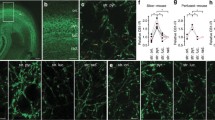Abstract.
The CB1 cannabinoid receptor is widely distributed in the central nervous system. The substantia nigra pars reticulata (SNR) belongs to the brain regions with the highest density of CB1 receptors. According to anatomical studies, most of the CB1 receptors in the SNR are localized on terminals of striatonigral GABAergic neurons. The aim of the present study was to clarify the function of these receptors.
Electrophysiological properties of SNR neurons were studied in brain slices with the patch-clamp technique. Inhibitory postsynaptic currents (IPSCs) were elicited in parasagittal slices by electrical stimulation in the internal capsule. The mixed CB1/CB2 cannabinoid receptor agonist WIN55212-2 (1 µM and 10 µM) concentration dependently decreased the amplitude of IPSCs. CP55940, another mixed CB1/CB2 cannabinoid receptor agonist, also lowered IPSC amplitude. Superfused alone, the CB1-selective antagonist SR141716A (1 µM) increased the amplitude of IPSCs. In interaction experiments, SR141716A (1 µM) prevented the inhibition produced by WIN55212-2 (1 µM). WIN55212-2 (1 µM) had no effect on GABAergic currents elicited by ejection of muscimol (1 mM) to the surface of the slices. WIN55212-2 (10 µM) did not influence the frequency and amplitude of spontaneously occurring IPSCs (sIPSCs) and the firing rate of SNR neurons.
The results show that activation of CB1 cannabinoid receptors inhibits GABAergic neurotransmission in the SNR. The likely mechanism is presynaptic inhibition of GABA release, since cannabinoids had no effects on currents evoked by direct stimulation of GABAA receptors by muscimol and on the amplitude of sIPSCs. The enhancement of IPSCs by the cannabinoid antagonist probably reflects continuous inhibition of GABAergic neurotransmission by an endogenous cannabinoid. SNR neurons receive GABAergic input from three sources: from the corpus striatum, the globus pallidus and from neighbouring SNR neurons. The observed inhibition of GABAergic neurotransmission was probably due to depression of the transmission between striatonigral axons and SNR neurons. No direct actions of cannabinoids on SNR neurons were observed in addition to this synaptic effect.
Similar content being viewed by others
Author information
Authors and Affiliations
Additional information
Electronic Publication
Rights and permissions
About this article
Cite this article
Wallmichrath, I., Szabo, B. Analysis of the effect of cannabinoids on GABAergic neurotransmission in the substantia nigra pars reticulata. Naunyn-Schmiedeberg's Arch Pharmacol 365, 326–334 (2002). https://doi.org/10.1007/s00210-001-0520-z
Received:
Accepted:
Issue Date:
DOI: https://doi.org/10.1007/s00210-001-0520-z




